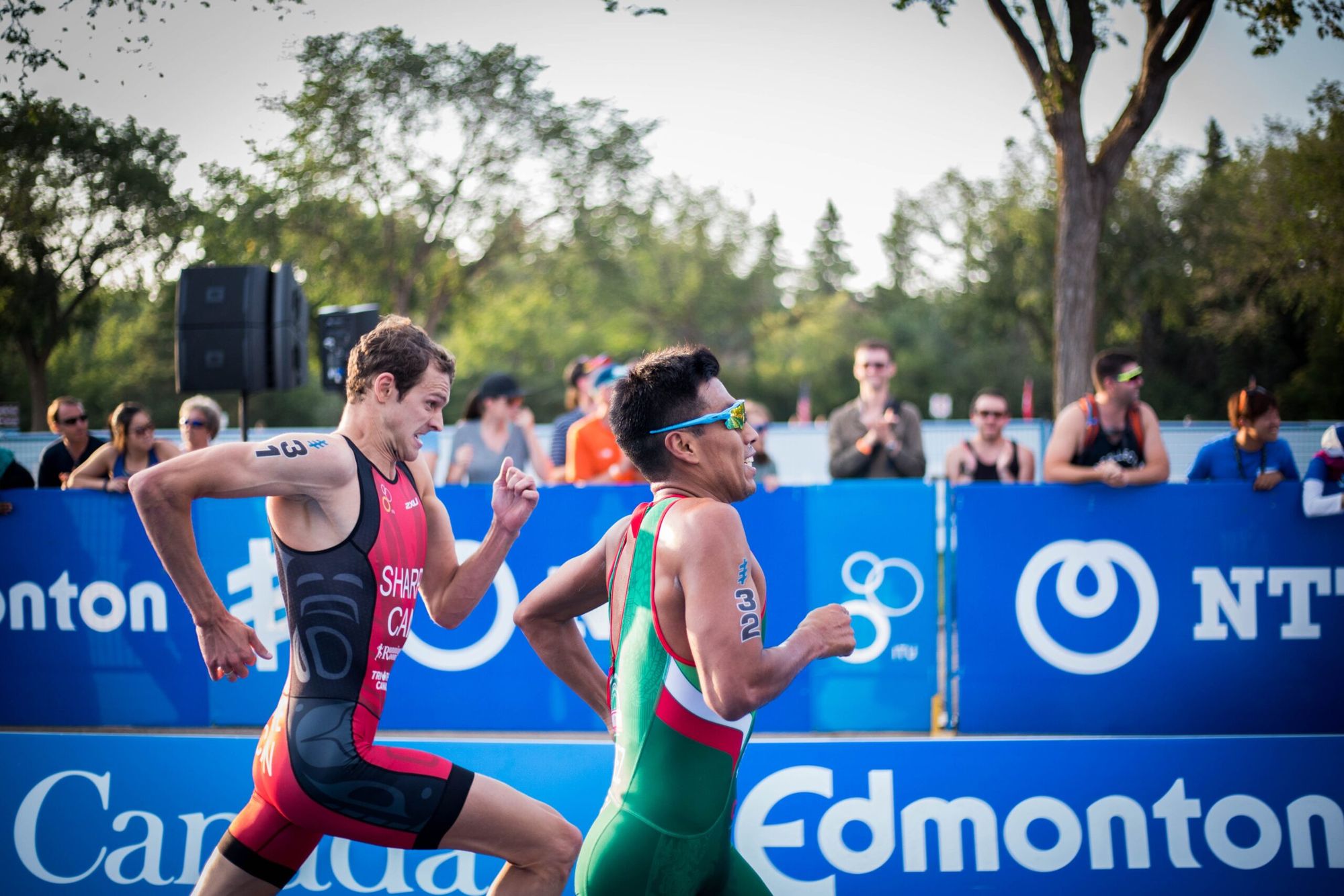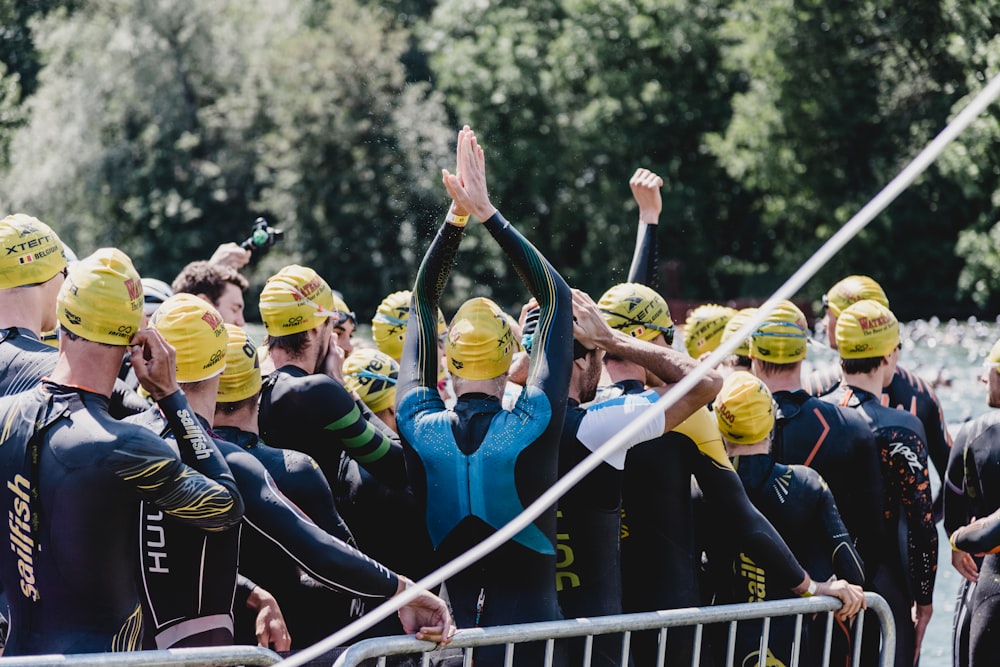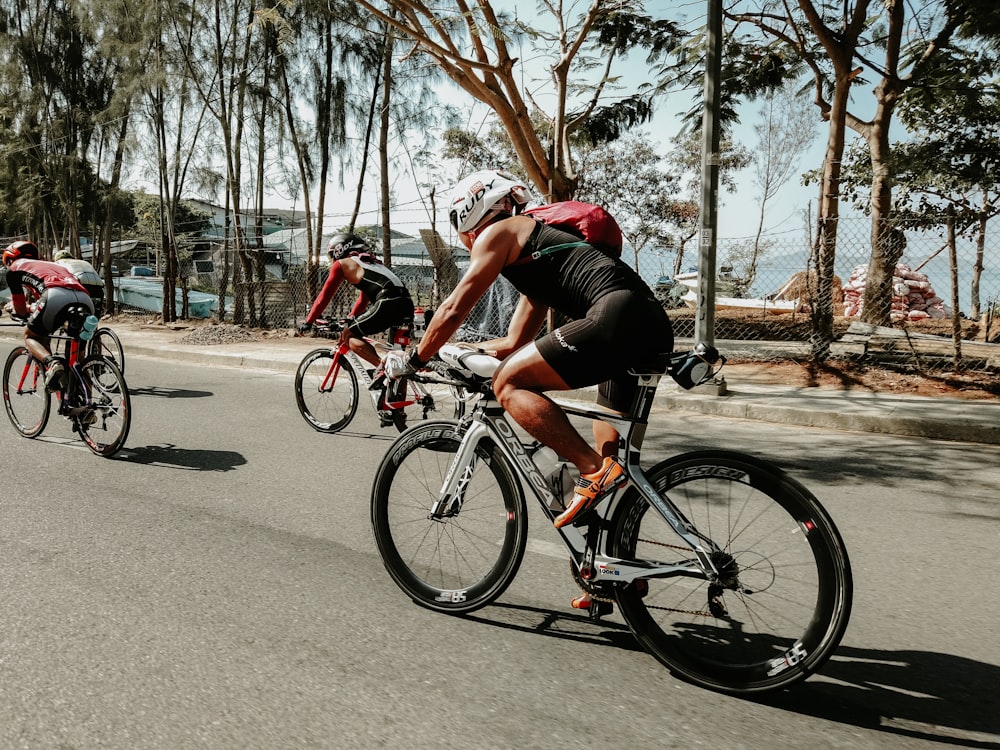
Have you ever heard of the Ironman competition? It is the penultimate triathlon event with many athletes coveting the title of Ironman. Enthusiasts say that this behemoth triathlon, started as a bet in the ’70s in Oahu, Hawaii between cyclists, runners, and swimmers, to see who was the most fit. Yes, participating in a triathlon means you’ll be participating in a multi-sport race that requires running, cycling and swimming for long distances.
Today, many athletes and fitness aficionados work very hard in training and finishing this kind of contest because it is believed that a triathlon is the ultimate test of strength and endurance. But many who have finished this kind of rigorous event say that it also takes persistence, patience, and perseverance against adversity to come out on top. Learn more about triathlon competitions below and find out how you can train for one:
What Are the Origins of a Triathlon?
The word “triathlon” has Greek origins. The term comes from the words “treis” or three and “athlos” or competition. It’s apropos because triathlon participants are required to join three events: swim, bike, and run. And all these events must be done continuously with no breaks in between. This complex sport has roots springing from multiple event races held in France in the 1920s.
However, the triathlon competition itself was formally conceived with specific rules and regulations as one continuous event back in 1974 in Mission Bay, California. Today, the triathlon has gained a reputation for being one of the most difficult athletic tournaments, with many athletes aspiring to finish the race and gain recognition for their efforts. The triathlon was finally granted Olympic status in the year 2000.
What Are the Requirements in a Triathlon?
A triathlon competition has categories based on the length and distance of the three sporting events. Individuals can join whatever category they feel comfortable with; and this usually hinges on the fitness level and experience of the participant. There are several triathlon distances, and here are the top 4 of the most common categories:
- Sprint: 750meter swim, 20 km bike ride, and 5km run
- Olympic: 1.5km swim, 40km bike ride, and 10km run
- Half or 70.3: 1.9km swim, 90km bike ride, and 21.1km run
- Full or ultra: 3.8km to swim, 180km bike ride, and 42.2km run
What are the Popular Triathlon Competitions?
Notable triathlon competitions include the famous Ironman tournament, Escape from Alcatraz Triathlon in California, and the DATEFV challenge in Roth Germany. Apart from being a true challenge of fitness, endurance, strength, and stamina, the triathlon also provides athletes with the added opportunity to not only achieve a state of self-fulfillment but also travel and see the world.
Many triathlon participants go out of their way to join races all over the globe. Some tournaments, like Ironman, are hosted in different countries or locations each season, giving elite athletes, sporting enthusiasts, and even beginners taking an interest in this sport a chance to work out and go on an adventure.
Traveling to places may sound like the triathlon is nothing but pure fun and excitement. However, what makes triathlons difficult is the continuity of the three races. While you may go at your own pace, the race is designed to be done with no long stops in between and with seamless transitions from one event to the next. Moreover, some triathlons may be time-bound, and those awarded the title of “finisher” must complete the course within the given time. Data says women average a little over 3 hours, while men take roughly 2 hours and 50 minutes to complete the Olympic category.

How Do You train for a Triathlon?
With the grueling distance required to finish a triathlon, it’s no wonder that many triathletes do the most they can to invest in their preparation for competition day. As much as possible, you want to get the most out of this experience by priming your body and ensuring its’ in tiptop shape. Conditioning your physique and mental prowess allows you to finish the course, maybe garner a podium finish, but most of all, have fun. If you are interested in joining a triathlon, here are ways in which you can prepare your body and mind.
Get Your Body Ready
Triathlons are largely physical activities that will require you to exert effort, endure hours of continuous work, and use up energy. This means that in order to successfully complete a triathlon, your body must be prepared for the exacting conditions. Here’s what you can do to prep your body:
Make the Time
It is not so easy to join a triathlon on a whim, especially if it is your first time doing so. Begin by setting up a routine and carving a specific time in your schedule to practice because consistency with training matters. How much practice you need would depend on your current physical state. Usually, fit individuals who actively workout would need at least six weeks to get themselves ready for a triathlon, while sedentary individuals will have to spend a few more months building up their fitness.
Practice for Each Event
A triathlon involves running, cycling, and swimming. If you are lacking in one skill, it is important to practice to increase your proficiency. For example, you can train your body to cycle for long distances by regularly attending indoor cycling classes (spin classes).
More importantly, you have to focus on your weakest event while still training for your strongest one. It is also important to note that side-dominance should be addressed. This means working both sides of your body so that you are equally strong on your left and right sides. Combine strength training and endurance exercises into your routine to build muscle endurance on either side. Additionally, since most events require leg strength, include a lot of leg strengthening exercises, like squats and lunges.
Train in the Shoes You Plan to Wear
Every athlete has equipment. For triathletes, shoes are the most important one. It is best to train in the shoes that you intend on wearing come competition day. This will condition your feet and body. Moreover, it is important to note that different shoes will fit differently, leaving you with different levels of comfort. It also takes some time to break in your shoes so that your feet fit in them snugly.
Eat the Right Food
Training for a triathlon can be pretty draining so you’re required to fuel your body with quality food. Good nutrition is part and parcel of your fitness plan. Bear in mind that your body burns energy as it engages in strenuous physical activity. If possible, consult a dietitian to craft an eating plan that will help get your energy levels up and allow you to be in the best shape possible.
Seek Professional Guidance
Whether you are just starting out or have been doing triathlons for a short while, it is always an excellent idea to seek professional guidance. Find a reputable personal trainer who can craft workout and training plans for clients doing a triathlon. If this is not very cost-efficient for you, you may also join triathlete groups and train with seasoned triathletes. Having training companions may also be a great motivation for you to show up every day.

Prepare Your Mind
While triathlons require a lot of physical effort, they also require mental preparedness. The continuity from one event to the next and the energy required for the event itself means you must learn the fine art of focus. Conditioning your mind is essential in triathlons because you must have the mental toughness to overcome every conceivable obstacle you encounter during the race. Moreover, developing healthy mental coping mechanisms and habits will help relieve any stressful feelings that may negatively affect the outcome of your race. Here are some ways to help mentally prepare you for your triathlon.
Create a Motto
One way to stay focused is to create a motto. For some, the repetitive training cycle and long hours can make it difficult to keep their mind in the right state for optimum performance. Creating a motto that you can recite repeatedly in moments of distraction can help get you back on track. Something as simple as “yes, I can,” can do wonders for your self-esteem. You can even kick it up a notch and make a vision board of you finishing your triathlon race. Think of it as you being your biggest cheerleader.
Meditate
Meditation before each training session helps you enter into a relaxed yet aware state. It helps relieve negative energy and stress which could otherwise affect your performance. There are numerous meditation apps that you can use online to help you with this. Moreover, note that meditation does not have to be long. Even one minute of simple breathing exercises can help you ease into your workout. If you are up for it, and with practice, you can incorporate yoga into your meditation routine as well as some stretches.
Get Support and Encouragement
Reach out to your support group. Triathlon training can be draining and tiresome. When it feels too much, talk to someone. Seek out your coaches for advice on how to stay focused during training. Also, consider reaching out to your friends and family to hear words of encouragement. Having people who cheer you on keeps you inspired.
Moreover, you can also find the most optimal training program for you based on your genetics by taking a CircleDNA test. You will get comprehensive genetic fitness reports that provide insight on your genetic strengths and weaknesses, such as your physical power, strength, and endurance. This can help you figure out a training routine that suits your body best, by giving yourself extra training on what you might not be genetically best at, such as having high endurance. Your CircleDNA test can also tell you which sports you’re genetically most likely to be best at.





